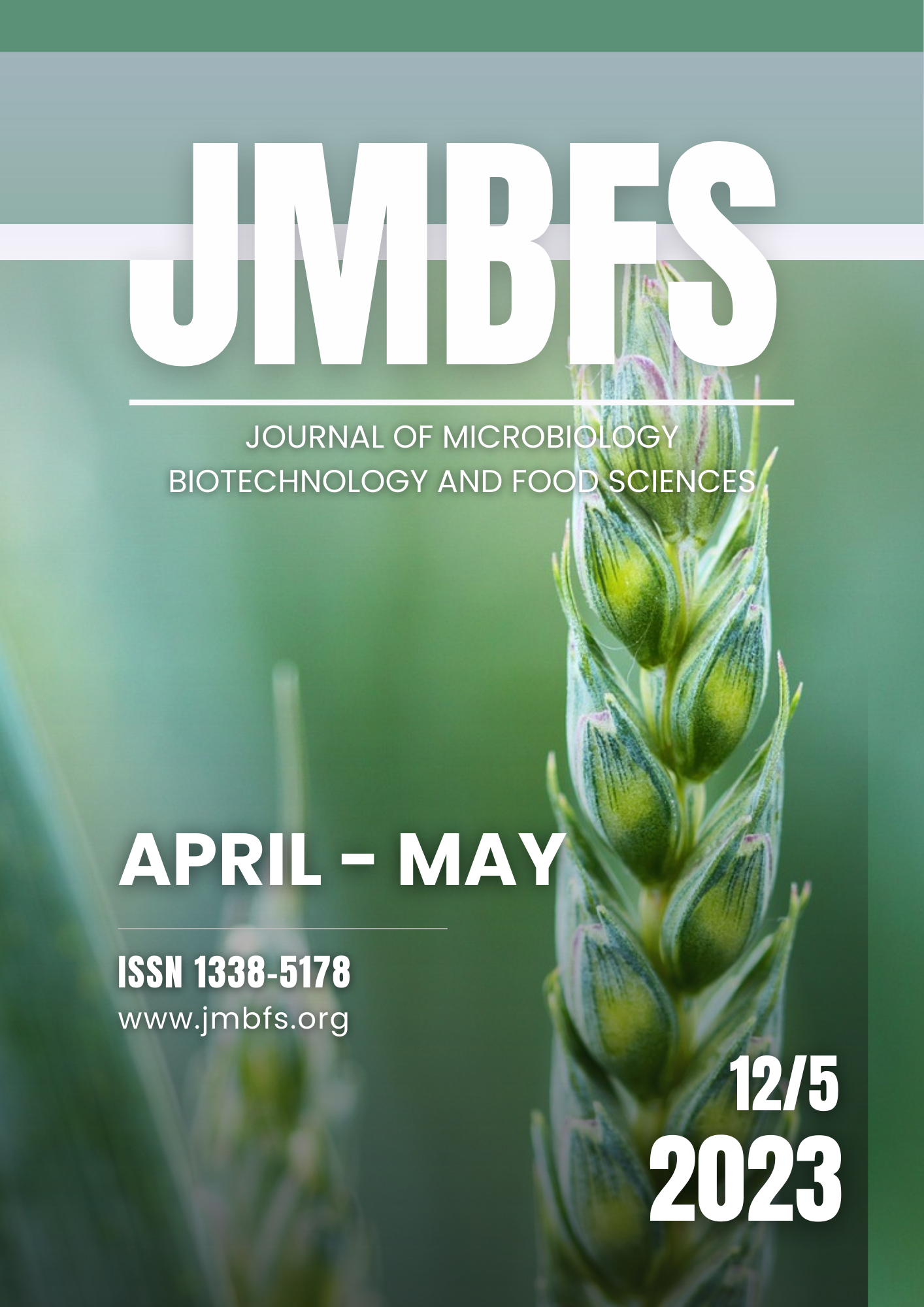IN VITRO EVALUATION OF THE ANTIOXIDANT, ANTIBACTERIAL, ANTIBIOFILM, AND CYTOTOXIC ACTIVITY OF MENTHA PIPERITA ESSENTIAL OIL
DOI:
https://doi.org/10.55251/jmbfs.6206Keywords:
Mentha piperita, Antioxidant, Antibacterial, Antibiofilm, CytotoxicityAbstract
Nowadays, antibacterial resistance to synthetic antibiotics has become a big issue worldwide. Mentha piperita essential oil (EO) and its bioactive components with antibacterial, antibiofilm, and antioxidant properties are recommended for the treatment of microbial infections in traditional medicine. This study aimed to detect phytochemical components, antioxidant and cytotoxic activity; to evaluate antibacterial and antibiofilm effects of M. piperita EO on strains.
Gas chromatography/mass spectrometry (GC-MS), 2,2-diphenyl-1-picrylhydrazyl (DPPH), and the 3-(4,5-dimethylthiazol-2-yl)-2,5-diphenyltetrazolium bromide (MTT) tests were used to determine chemical composition, antioxidant and cytotoxic potentials of EO, respectively. Antibacterial activity was carried out through disc diffusion and minimum inhibitory concentration (MIC) assays. The biofilm biomass of bacteria was determined by the crystal violet (CV) staining method.
Menthone (27.28%), L-menthol (23.71%), and limonene (7.48%) were the main components. M. piperita EO was found to have strong antibacterial activity with the MIC-MBC values in the range of 0.125-16.00% (v/v) and moderate antioxidant activity. The peppermint EO showed an antibiofilm effect on all strains and a cytotoxic effect on NIH 3T3 cells. M. piperita EO may be used alone or in combination with antibiotics or carrier oils as a therapeutic agent against bacterial infections. Further in vivo experiments should be carried out to detect a safe dosage of EO.
Downloads
Downloads
Published
How to Cite
Issue
Section
License
Copyright (c) 2022 Mehzat Altun

This work is licensed under a Creative Commons Attribution 4.0 International License.
All papers published in the Journal of Microbiology, Biotechnology and Food Sciences are published under a CC-BY licence (CC-BY 4.0). Published materials can be shared (copy and redistribute the material in any medium or format) and adapted (remix, transform, and build upon the material for any purpose, even commercially) with specifying the author(s).





